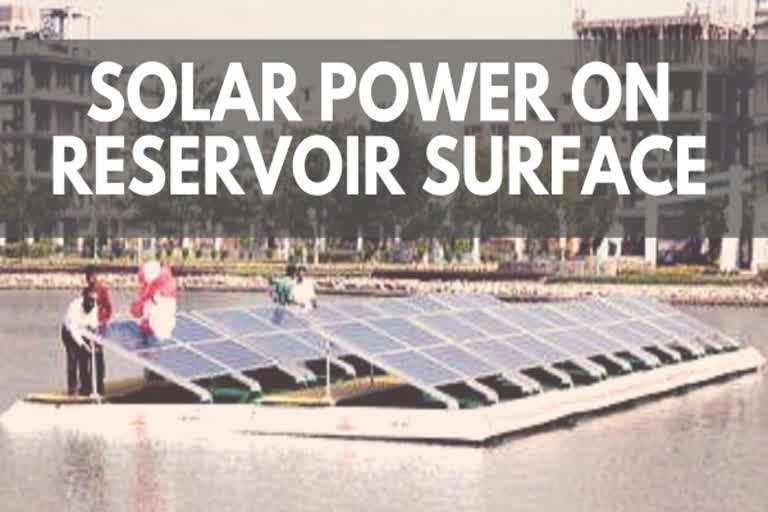Hyderabad: In an encouragement of sorts to the central government's plan to enrich the environment by prioritising clean energy generation and reduction of oil imports by 10% by 2030, new research studies have revealed that by utilising the country's major reservoir surfaces, India can generate 280 gigawatts (one thousand megawatts is equal to one gigawatt) of solar power.
The Energy Resources Commission, which is an integral part of the Energy Transmission Commission (ETC), estimates that the reservoir surfaces spread over 18,000 sq km area in India are ... literally, solar energy mines.
Around nine months ago the International Labour Organisation (ILO) complimented India, which aims to achieve 100 gigawatts of solar power by 2022, for producing close to 175 gigawatts much ahead of its set target date.
If solar power generation on water surface materialises, hopes are bright for more and more miracles in the future.
Many countries that have indulged in environmental destruction by consuming fossil fuels have been on the look out for alternative energy sources for many years. In the process of increasing the efficiency of renewable energy, a floating (Floto Oltaic) solar power project was set up in California a decade ago. Gradually, it spread to other countries.
The World Bank has estimated recently that 10 percent of the total power supply in America is generated on reservoirs. Projections were already made in the past that gradually the production may reach 400 gigawatts worldwide. Various reports reveal that more than half of this can be generated on the reservoirs of India, thereby opening up many opportunities and possibilities!
Stories of Greater Hyderabad being active in roof top solar power generation are indicative of the renewed awareness of people on alternative energy sources. The Centre has recently finalised prices and concessions for the installation of solar panels on homes, apartments and gated colonies. We often hear success stories of solar power generation in universities, government hospitals and railways.
Construction of a 10 MW solar power plant on a water canal in Vadodara, Gujarat, nearly five years ago, was a sensation. Generally, such a project on land requires acquisition of about 50 thousand acres. The construction on the canal has twin advantages - overcoming the problem of acquiring land and controlling water evaporation.
In countries like Germany, such projects have cost 10-15 per cent more. But, experts feel that considering the long term benefits the marginal increase is negligible. The use of aluminum in place of iron-based floating solar power projects on Mudasarlova and Meghdrigadda reservoirs of Visakhapatnam has yielded good results. The solar panels were installed with German technology and care was taken to ensure that no problems arise even if the water level increased or decreased.
It is well known that, four years ago, Prime Minister Modi had inaugurated the International Solar Alliance (ISA) that can fulfill the energy needs of around 120 countries. If the services of that organisation and the experiences of countries already involved in generating solar power on reservoirs is solicited, India will be able to take lead in the generation of solar power. This is an opportune time to initiate action with foolproof strategies and organisational infrastructure.
China, which is making huge strides in the solar power industry, has built an artificial lake on a collapsed coal mine near central Yinan City, generating 40 MW with a total of 66 lakh panels. Japan has the unique distinction of constructing solar projects on more than sixty reservoirs. Countries such as Indonesia, Chile, Taiwan and New Zealand are emerging as new destinations for solar power plants. India has a natural geographical advantage over these countries.
On the globe, between the Tropic of Capricorn and the Tropic of Cancer, abundant sun shine is shed for over 300 days in a year. India is among those countries which is placed between these latitudes.
This is of course, an unsolicited boon.
Coal and natural gas reserves have always been around. If their reserves are depleted, power generation will stop. Sunlight is not so, it is an infinite treasure. It has previously been proved that solar power can be increased by the installation of solar panels on crop farms.Preference for solar projects on reservoirs can prevent cutting of many trees. By laying the solar panels on the water surfaces, the cost of water purification is also saved.
The latest Energy Resources Agency Report has confirmed this fact. Germany uses solar and wind power for 85 percent of its domestic requirement. If the central and state governments resolve and achieve 10% solar power in India's total installed capacity in the near future, it will be a new dawn in the country's power sector.



